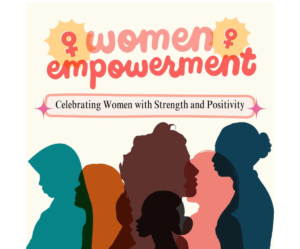Women’s empowerment

Women’s empowerment per second involves the creation of an environment within which women can make strategic life choices and decisions in a given context. The concept is so broad that measuring it has always been problematic. Following from this conundrum, various studies have developed different conceptualisation schemes and indicators to measure the complex idea. For instance, women’s empowerment depends upon cultural values, the social position, and life opportunities of a woman. Women’s empowerment can take place on three dimensions, which are at the micro-level (individual), meso-level (beliefs and actions in relation to relevant others), and macro-level (outcomes in the broader, societal context). Furthermore, women’s empowerment could be characterized in four major domains: socio-cultural, economic, education, and health.
While differences exist in measuring the concept of empowerment, similarities can be found in the available literature. In this regard, the main themes frequently used to conceptualize women’s empowerment are household decision-making, economic decision-making, control over resources, and physical mobility.
From this point of departure, the present study attempts to identify and understand various determinants of women’s empowerment in Pakistani society with the help of representative data from Demographic and Health Surveys. Investigating women’s empowerment in Pakistan is important, because of the male dominance and gender gaps which are hindering the progress of women to take an active part in development in Pakistani society.
Furthermore, empowerment is a strong determinant for healthcare decision-making as well as of physical and mental health in females. Because women’s empowerment is an idea that acknowledges a woman’s control over her own life and personal decisions, it has a strong grounding in human rights propositions. Moreover, women constitute almost half the world’s population; hence, women’s empowerment is the key factor in achieving the highest levels of desirable development.
Despite the widespread acclamation of women’s empowerment and the major role of women in the development process, their status is not equal to that of men across most countries of the world. In many parts of the world, women are in a disadvantaged position, and hence most of the time ranked below their male counterparts in the social hierarchy. This disadvantaged position can well be understood through the glaring differences between men and women with respect to many human-rights, cultural, economic, and social indicators. For instance, globally, women spend two to ten times more hours than men on unpaid care work. Similarly, of all the illiterate and poor people across the world, women constitute 65 and 70% respectively. It is reported that only 1% of the world’s total assets are held in women’s names. Moreover, data also indicates that 70% of the 1.3 billion people living in extreme poverty are women or girls. Owing to these conditions, women enjoy substantially lower status than men.
Although gender-based discrimination is a global issue, Pakistan needs special attention in terms of women’s empowerment. Pakistani society, in both its normative and existential order, is hierarchical in nature and exhibits unequal power relations between men and women, whereby women are placed under men. The existence of significant gender disparities makes it a non-egalitarian society where gender equality and women’s emancipation appear a faraway goal. In this context, the low level of women’s empowerment is a factual issue in Pakistan as the country is ranked almost at the bottom of the Gender Gap Index – 151 of 153 studied countries. Similarly, in 2019, the Human Development Index value for females was lower than for males (0.464 vs. 0.622) in the country.
The gender disparity highlighted by these measures can be clearly observed through the evidence at hand. For instance, Pakistan has a very low rate of female labour-force participation compared to their male counterparts (25% vs. 82%). In addition, adult women had less secondary-school education than males (26.7% vs. 47.3%). Concomitantly, low educational opportunities and poor educational achievement lead to low empowerment among women, particularly those who live in remote areas of the country. The situation is further exacerbated when female parliamentarians in Pakistan appear to be bound by patriarchal beliefs and practices when they could realize empowerment. In such circumstances, the notion of empowerment in Pakistan appears to be only theoretical without any sense of practical embodiment.
Against this backdrop of a persistently bleak situation for women’s empowerment in the country, the government of Pakistan has launched some targeted actions, such as the National Policy of Development and Empowerment in 2002, which aimed to improve the economic, social, and political empowerment of women. Additionally, the number of seats reserved for women in both the Senate and the National and Provincial Assemblies has also been increased. Nevertheless, women in Pakistan are still subjected to unequal power relations, and are less authorized to make decisions about their own lives. The country stands among the lowest in the world in terms of women’s empowerment, even though almost half its population is made up of women, and empowering them could improve the overall well-being of society. There is a paucity of literature empirically conceptualizing women’s empowerment and its determinants in Pakistan. For that reason, we have adapted the framework developed by Mahmud et al , which conceptualizes women’s empowerment as a dynamic and multi-dimensional process. By the same token, the framework of the present study encompasses four major determinants: demographic, economic, social, and information-exposure factors. Likewise, it denotes two major dimensions of women empowerment, which are decision-making and ownership. Decision-making involves decisions about healthcare, economic affairs, and mobility issues. Ownership includes the ownership of house and land. Conceptualizing the determinants and dimensions of women’s empowerment with empirical and representative data is the unique aspect of the study, which adds to the body of knowledge. The results of the present study help to present policy implications for enhancing women’s status in Pakistan.
